Article highlights
- What is the difference between guidelines and policies?
- What it means for you.
- Implementing guidelines and policies.
There are a lot of terms that seem interchangeable when discussing best business practices and management. For example, when you're talking about employee behavior and company rules, you'll hear terms like policies, guidelines, procedures, and standards.
They may seem similar and interchangeable, but guidelines and policies are not the same thing, and neither are standards and procedures.
It's especially important, at least for the purposes of this article, to understand the differences between guidelines and policies. Using the correct term can help avoid confusion and make sure everyone is on the same page.
So what are the differences between guidelines and policies?
Understanding the difference between guidelines vs policies
Most organizations have both guidelines and policies to help staff do their jobs effectively, but the two are very different.
Simply put, guidelines are general recommendations; they're not mandatory or required. Employees who don't follow guidelines usually don't have anything happen to them, discipline-wise.
Policies are formalized requirements that apply to a specific area or task. They're mandatory and are required either because of company values or legal requirements. Employees who violate a policy may be disciplined or even fired.
Think of it this way: Employees in most corporations are encouraged to take two weeks of vacation per year, but they're not required to do so. And if they don't, nothing will happen to them.
But, employees are required to not harass their coworkers. If someone harasses fellow employees, they could be reprimanded, suspended, or even fired.
What is a guideline?
Guidelines guide employees through a process or a task. They give general recommendations of how to perform a task, or advice on how to proceed in a situation. They usually provide a good overview of how to act in a situation where there's no specific policy or standard.
For example, a company's branding guidelines will often include recommendations on how to use the company logo and the ideal brand voice for marketing materials. There will be certain requirements on the colors and shapes to use, but there won't be any specific direction that "a logo must be exactly 3 inches by 3 inches," since that clearly won't work on a billboard or a ballpoint pen. Hence, the guidelines are necessary.
Guidelines are more informal and leave room for flexibility in different circumstances. They'll outline best practices, and highly recommend them, but they're not necessary.
And they also assume the best of the person making the decision. They leave a little room for the employee to use their best judgment.
But for all their informality, they're still an important part of the business process.
What is a policy?
Policies are formalized, high-level statements that are often created in response to legal requirements, governmental regulations, or to protect proprietary information and company profits. They outline roles, responsibilities, and expectations for specific programs and tasks.
They are a direct reflection of a company's values and objectives, and provide a decision-making pathway in specific situations. They also lay out ways to measure success: You either followed the policy or you didn't. Unlike guidelines, policies don't count on employees using their best judgment. There is only one right option, and this is how you should follow it.
Policies are enforceable and mandatory, which means there are consequences if they're not followed. The policies may lay out the consequences, which can include additional training, probation, or even termination, depending on the severity of the violation.
For example, a manufacturer may have certain policies regarding safety and the proper behavior around manufacturing equipment. For a company that makes safety one of its non-negotiables, they could terminate an employee who blatantly violated the safety policies by improperly using the equipment.
Companies usually have organization-wide policies, such as a Dress Code Policy or Sexual Harassment Policy. But they may have more specific policies for specific departments or tasks, such as IT Policies or Cash Handling Policies.
What about standards and procedures?
These two terms often get pulled into the discussion of policies versus guidelines. And they're also part of a business' processes. Guidelines, policies, procedures, and standards all play distinct roles in helping employees know how to do their jobs.
Standards are about quality. They tell you what is considered an acceptable level of quality or performance. This makes sure everything and everyone is consistent in their performance across the organization.
For example, most law enforcement organizations have standards for grooming and uniforms. Uniform standards may require officers to clean and iron their uniforms, tuck in their shirts, shine their shoes, and maintain a clean appearance.
Procedures are step-by-step instructions that detail how to carry out a particular task, such as setting up a new computer password or filing an expense report. They often go hand-in-hand with policies and guidelines.
For example, a customer service policy may require representatives to document customer complaints. The policy will usually be paired with a procedure that details the necessary steps to file the complaint. It can also include who is responsible for documentation, the forms to use, where it should be filed, and what to do with the document after it's finished.
Many operational processes will also incorporate guidelines, policies, standards, and procedures as their corporate controls. Here's an example:
Nowadays, many organizations use social media and have accounts on several different social platforms. Using the four controls can ensure consistency and excellence in their social media platform. And while a few people may all contribute to the messages being promoted, the four controls ensure they're all consistent.
Social media guidelines will recommend things to post, advising the social media managers on the type of voice to use (humorous or serious, informative or curious), and the types of images and content to use. The guidelines may also give advice on both official and personal social media use.
(Intel's social media guidelines advise employees to use common sense when posting, erring on the side of caution, admitting mistakes, and apologizing, if necessary.)
A social media policy is more direct, outlining how employees can use the company's social media platforms, what is unacceptable, and what the company will do about violations.
It may require certain accounts to include a disclaimer, or prohibit inflammatory or divisive content. It should also include clear definitions for those terms.
(Dell's social media policy prohibits employees from sharing confidential company information, and requires them to follow the company's code of conduct, local laws, and terms of service on the different platforms they use.)
Social media standards specify steps to take to make quality posts, like proofreading for spelling and grammar, ensuring links work, and that images meet branding guidelines.
Finally, social media procedures outline the steps to post something on a social platform, including instructions on using specific tools or the steps to get approval before posting.

What it means for you
Every organization has unique needs and circumstances, which means their policies and guidelines will be different. That also means every organization needs to determine how to apply the four controls to their own business.
But there are certain questions every company should answer to make the choice between guidelines and policies more clear.
What is the level of risk?
The higher the risk, or the more severe the penalty, the more you need a policy instead of a guideline. Policies are more formal and enforceable, which means a greater level of accountability. Policies show a higher level of commitment to ensuring employees follow laws and regulations.
For example, harassment, bullying, and anti-discrimination should be governed by policies instead of guidelines. Policies give leaders more power to investigate and discipline unacceptable behavior.
What is the culture of your organization?
Some organizational structures and personalities are more conducive to formal policies, while some can be better run with guidelines.
In more formal or traditional organizations, policies are generally expected and accepted for things to run smoothly. But in less traditional and more modern businesses, policies could slow things down or go ignored.
Some organizations, such as a small business, may be more relaxed when it comes to policies and guidelines. They may only have a few formal, mandatory policies in the highest-risk areas and let guidelines govern other areas.
But organizations in highly-regulated industries, such as banking, finance, insurance, and healthcare, must have enforceable policies so they can manage risks and protect themselves against litigation and regulatory fines.
How large or complex is your company?
Small- and medium-sized businesses may only need guidelines to operate effectively, because they're more flexible. An organization can pivot and adjust on the fly, without a committee and formal review to put a new guideline into action, or make changes to existing ones.
Larger, more complex organizations typically need formal policies. They set the standard for success, spell out the executive vision, and steer companies like ships, especially those held to external standards by industry or government regulations, an accrediting body, or a board of directors.

Implementing guidelines and policies
In spite of the differences between guidelines versus policies, the implementation process is very similar for both.
The biggest difference in implementing guidelines versus policies is that you'll want your employees to acknowledge and sign off on the policies. Since policies are mandatory, employee signatures serve as a record that they are aware of the requirements.
Here are a few best practices for implementing both guidelines and policies.
Make it clear
Both guidelines and policies should use clear language. They should avoid technical jargon and formal phrasing. They need to be written as simply and plainly as they can, without trying to "sound smart."
Utilizing convoluted phraseology will often serve as an impediment to the comprehension of your policies.
(Translation: Using big words makes your policies hard to understand.)
The employees who will be doing the job need to be able to understand the expectations and guidelines. You don't want there to be any question or room for interpretation
You'll also want to explain the difference between a policy versus a guideline versus a standard.
Make it available
Policies, guidelines, standards, and procedures help employees do their jobs well. But it only helps when they can find the information they need whenever, wherever they need it.
Your various documents should be easily accessible and searchable so they can use them as needed. People shouldn't have to go digging for a printed copy of the employee handbook they received on their first day, especially if they work out in the field or don't have an office or desk.
Policy management software like PowerDMS' can help your employees access the policies, guidelines, and standards they need in one secure, centralized location. Employees can sign in to PowerDMS on any laptop, tablet, or phone and find the policies or guidelines they need.
You can learn more about how to do that by requesting a free demo of our product. You can also visit our blog for more information, such as what's a policy versus a procedure?
